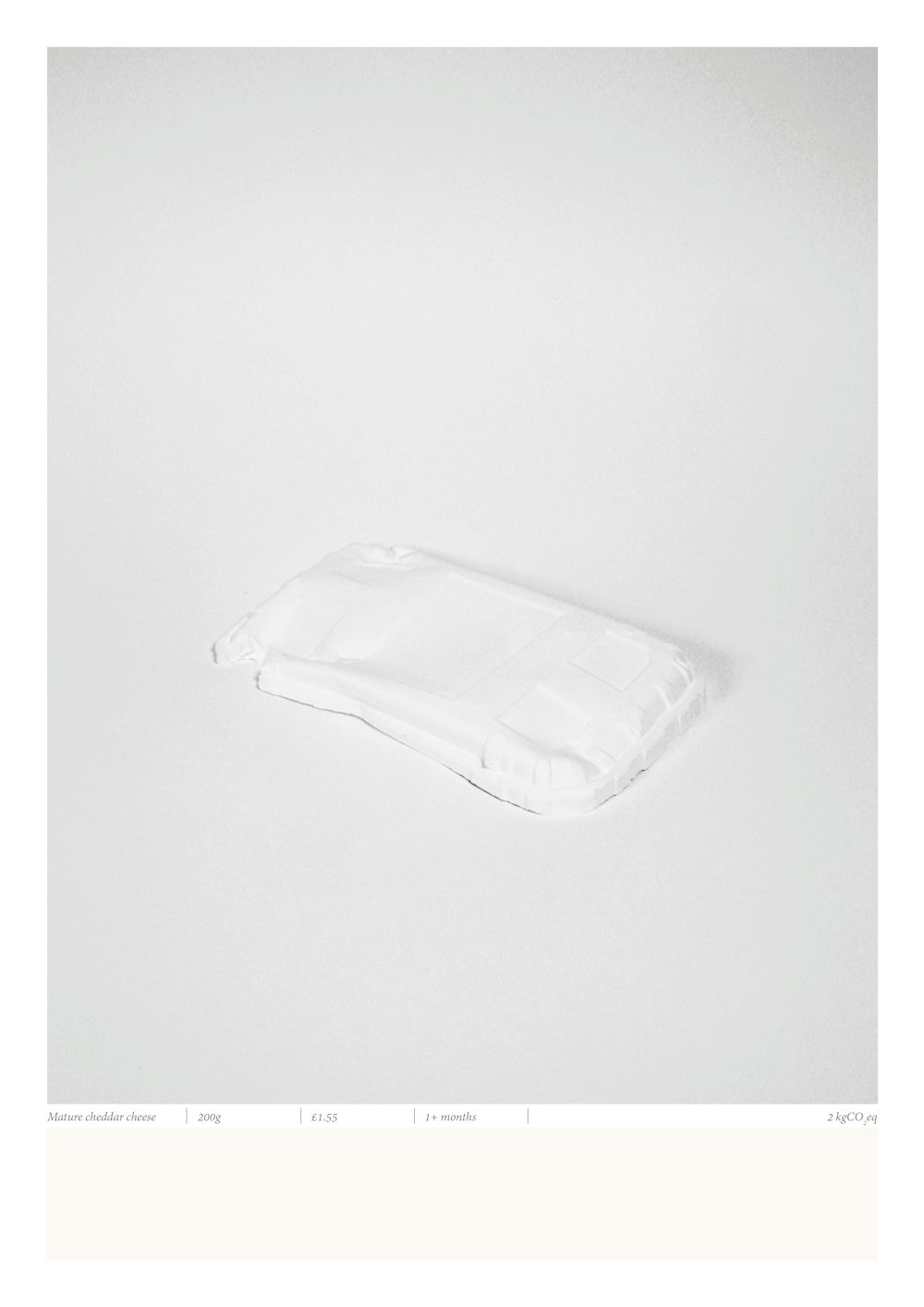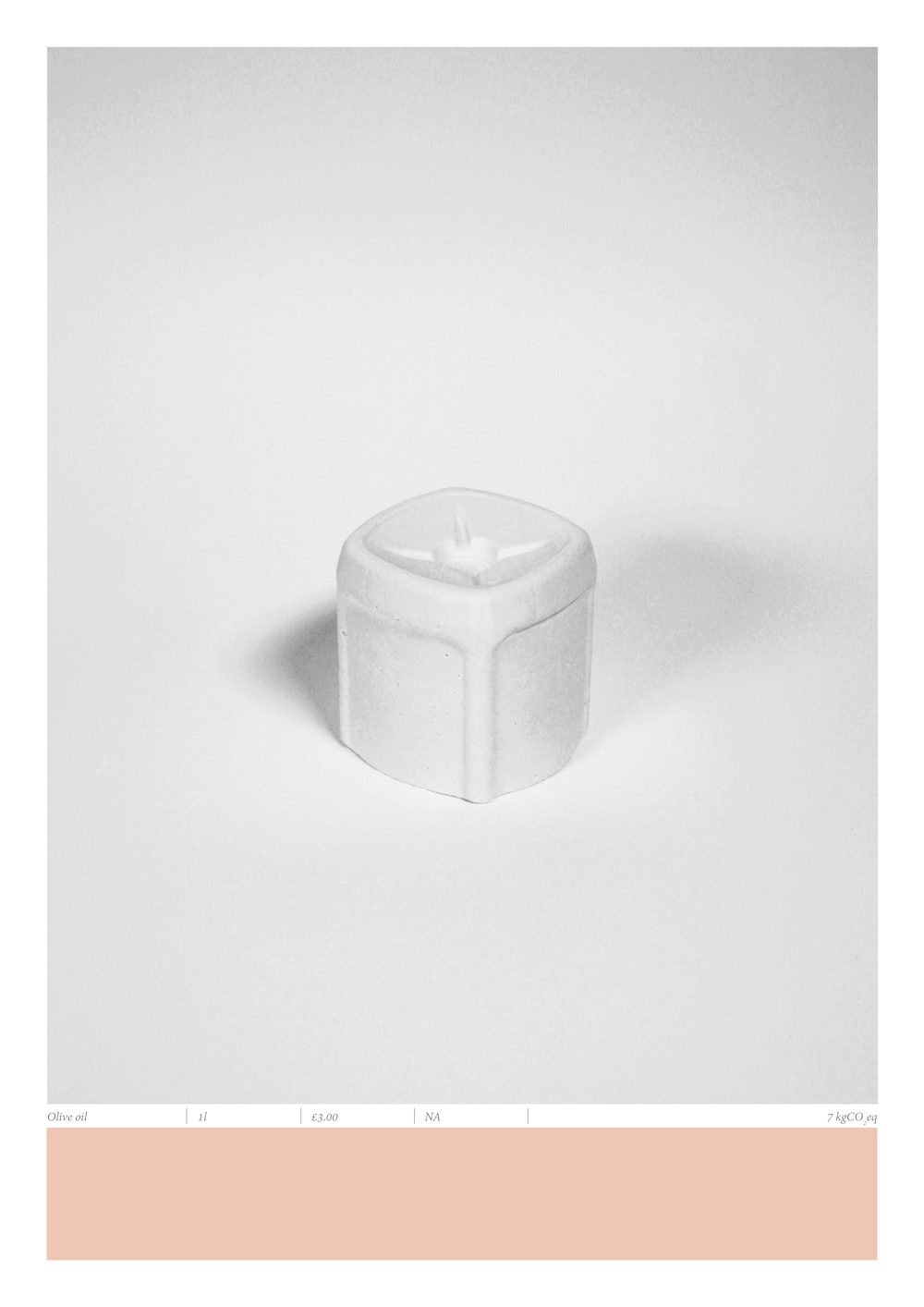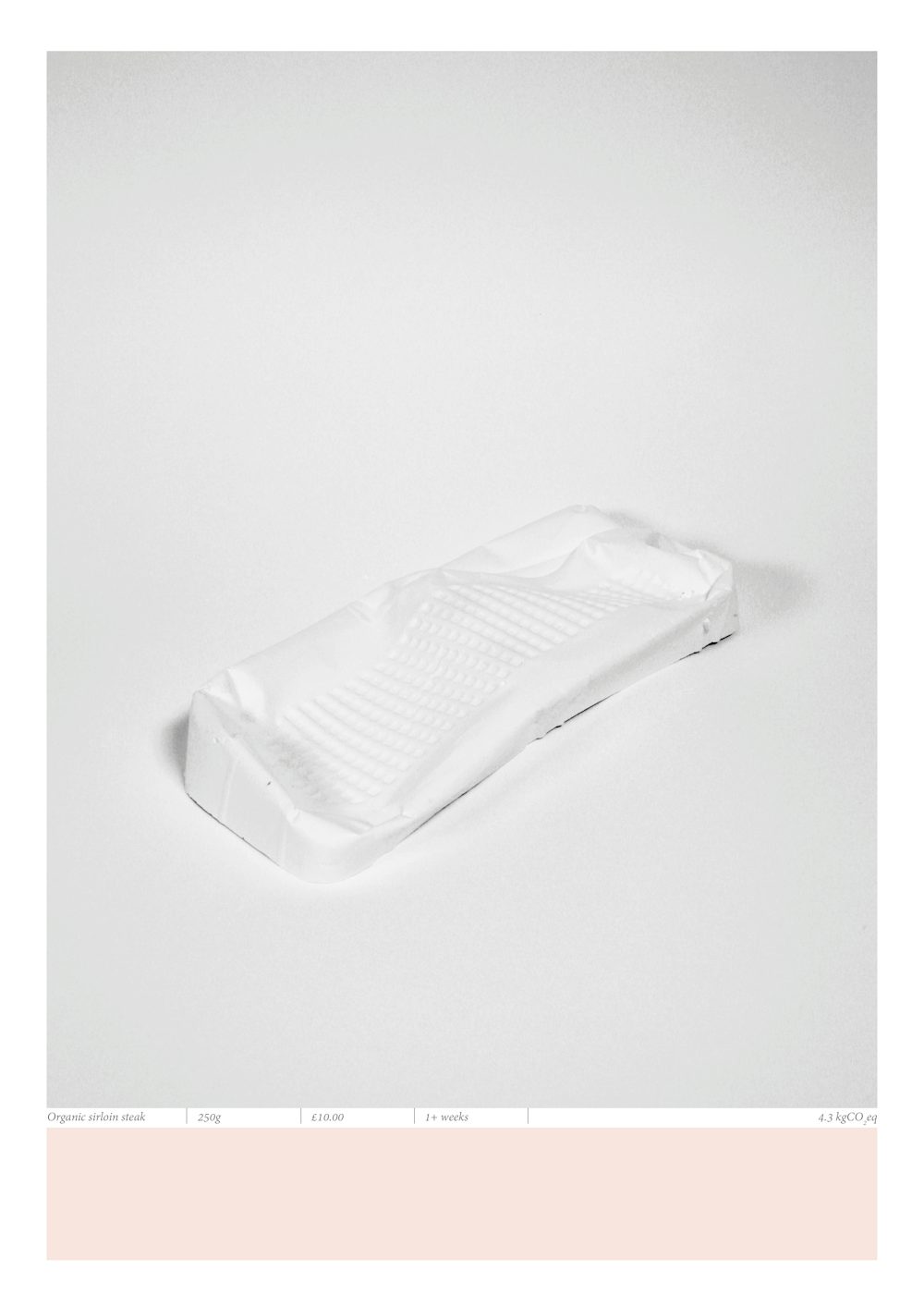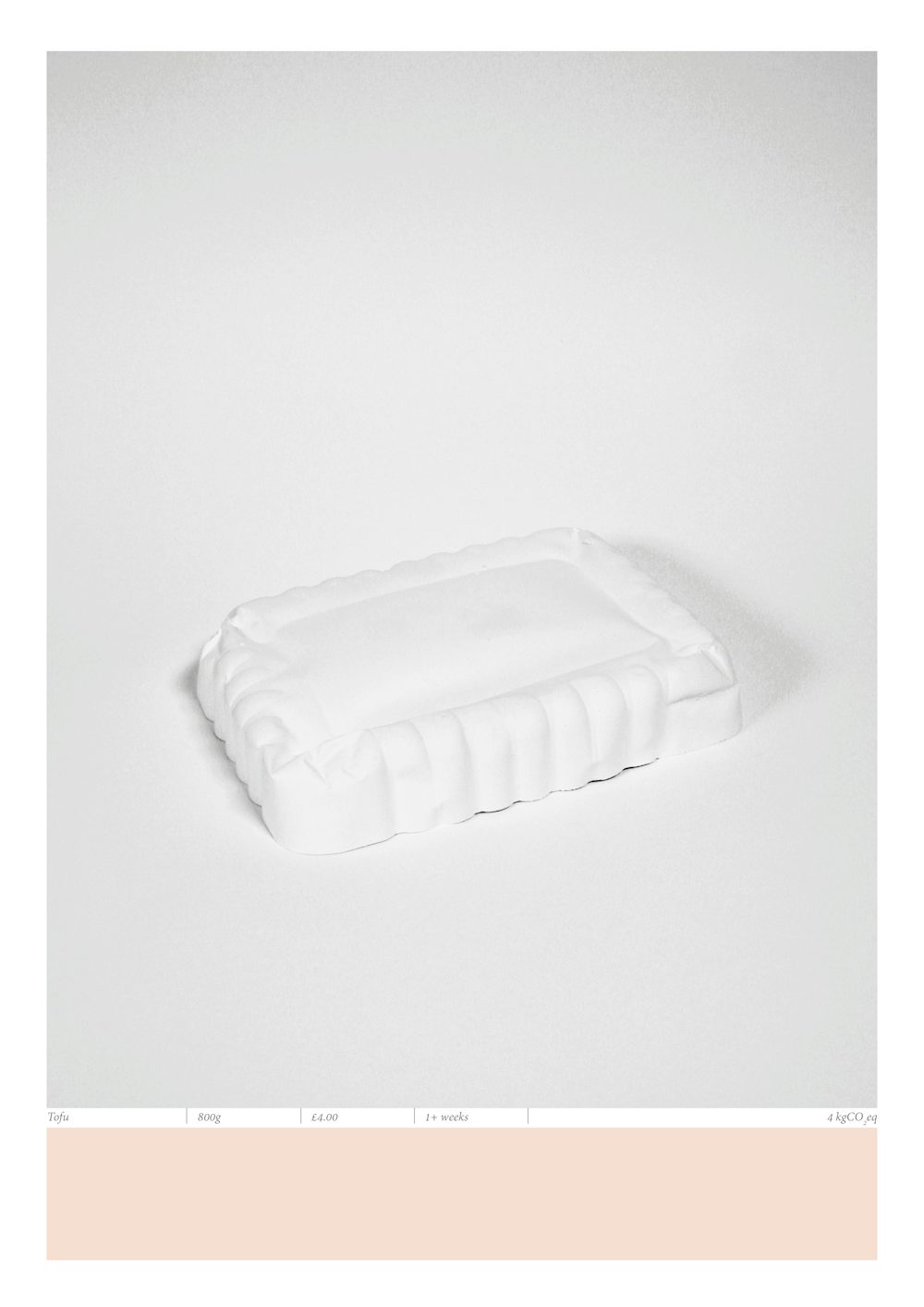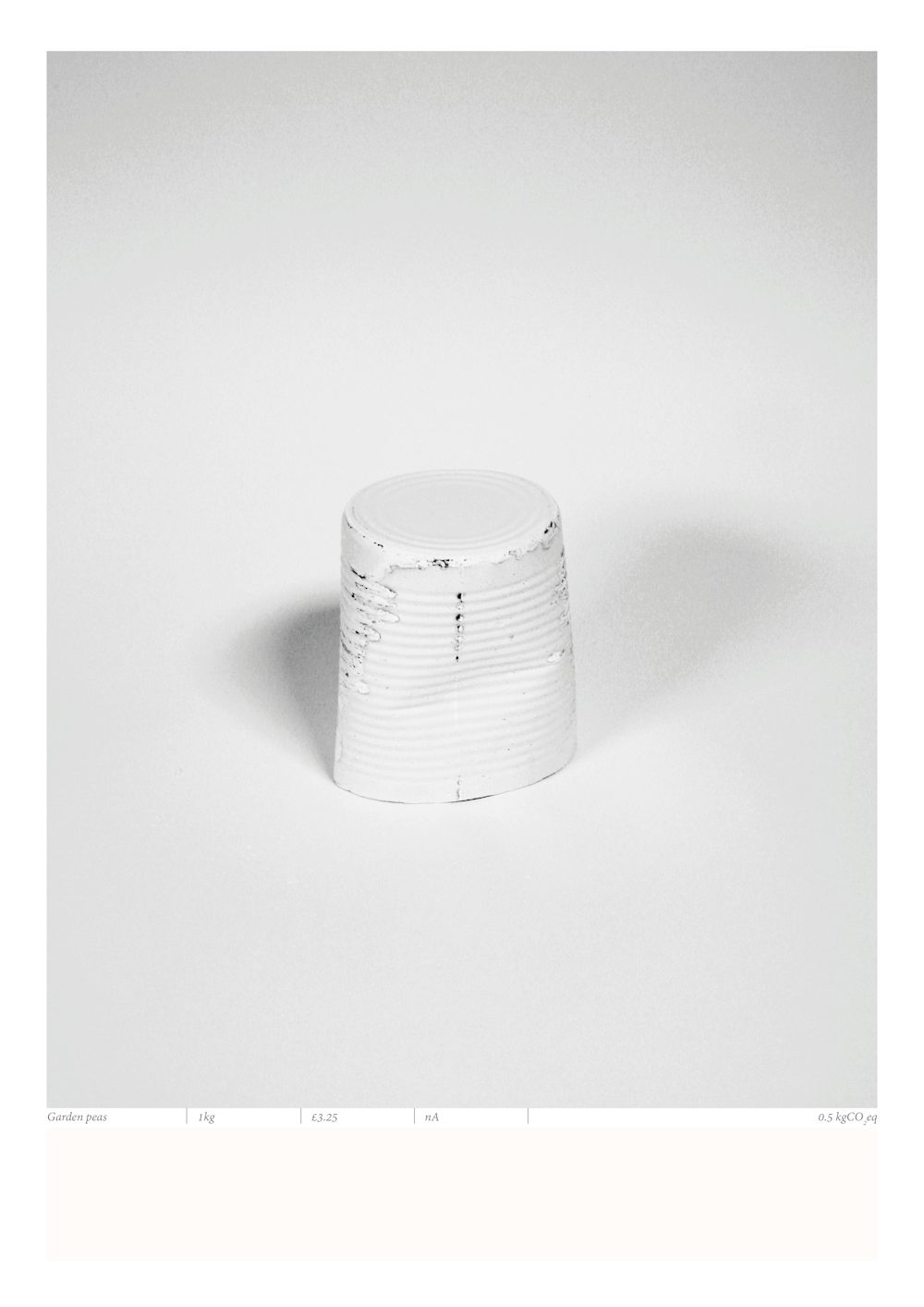Adam Price
"Grey Groceries"
Keywords: documentation, installation, objects, model-making, consumption, climate
The exponential increase of atmospheric CO2 levels within the last century has left us in uncharted territory. Billions of tonnes of CO2 are expelled into the atmosphere every year from coal, oil and gas combustion. There are no signs of these emissions starting to fall. The consequences of these changes vary from rising sea levels and temperatures, shrinking ice caps to more frequent natural disasters. The climate crisis is one of growing prominence, complexity and severity; a situation of the highest importance in today’s society. The current trajectory poses threats to our future existence and promises a dystopian world ahead.
Within desperate attempts to address the causes of the crisis, claims remain that the food industry, in particular agriculture, lies at the heart of the problem; contributing to a large proportion of greenhouse gas emissions. The popular documentary Cowspiracy quoted animal agriculture as responsible for 51% of greenhouse gas emissions and spread the conclusion that the less meat there is in the food system, the better. This number has recently been retracted and edited to 18%, including carbon sequester. The situation is not black and white as it was proclaimed, on the contrary it is a complex dilemma and, whilst it is important to address the large proportion of carbon emissions coming from the agriculture sector, it is necessary to understand the context in which these figures are disseminated.
This project aims to recreate everyday products we consume and that are found on our supermarket shelves - in doing so, the branding of the products are replaced with detailed carbon footprint information relative to each and every item.

